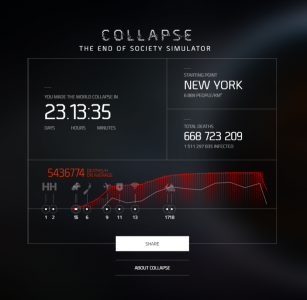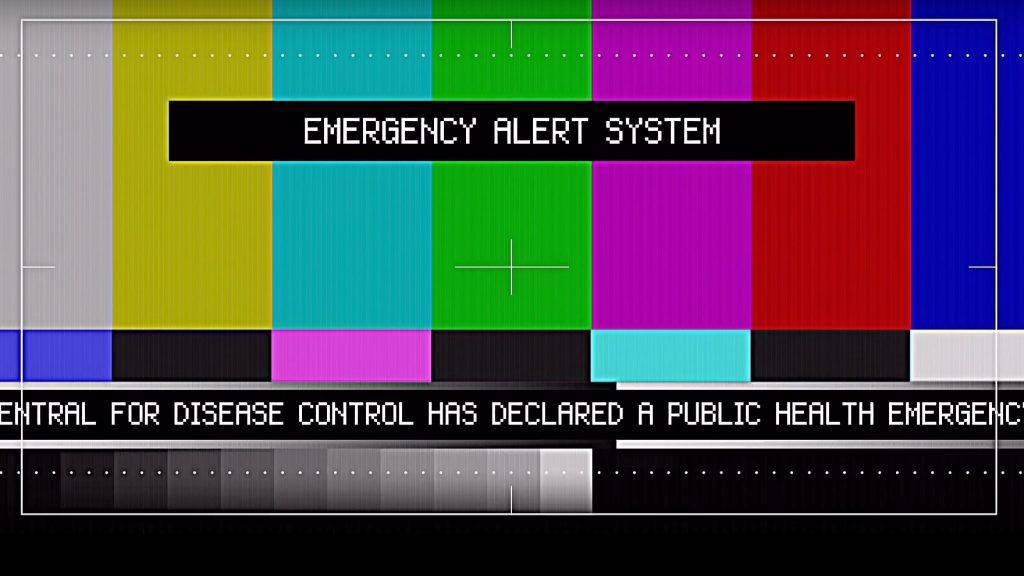By now you’ve probably either heard of, or played Tom Clancy’s The Division.
The MMO/shooter/RPG hybrid drops players into a deserted New York that’s reeling from an epidemic of a mutated version of smallpox.
Now, for all the complaints about how enemies are bullet sponges, one thing everybody seems to agree on is the fact that the recreation of New York City is as good as it gets. Not only does it look highly authentic, there’s an eerie atmosphere that hangs over its empty streets. Given how lifelike the city looks, we began to wonder whether an epidemic of this kind could bring a city like New York to its knees.
Could a plague wipe out a city as quickly as this? Could an epidemic destroy order so thoroughly? Could The Division actually happen?
The astute among you will know that it actually has.
The Division: Dark Winter
Conducted in 2001, Operation Dark Winter was an experiment designed to show authorities what would happen to the United States in the event of a bio-terrorism attack. The results of the 13 day long test, as described by the University of Pittsburgh Medical Center’s Center for Health Security, were shocking:
“An attack on the United States with biological weapons could threaten vital national security interests. Massive civilian casualties, breakdown in essential institutions, violation of democratic processes, civil disorder, loss of confidence in government and reduced U.S. strategic flexibility abroad are among the ways a biological attack might compromise U.S. security.”
Sounds familiar, doesn’t it?
The problem with all of this is that the study focussed on smallpox alone and we know that in The Division the term “mutated” or “unknown strain” is often pre-fixed to the disease.
Another problem is that back in 1980 the World Health Assembly ruled that smallpox had been wiped from the face of the planet, and that all countries should stop vaccinations of the disease.
Except that it wasn’t.
Two countries still hold samples of the virus, namely the United States and Russia.
From this point on we are treading into spoiler territory and if you haven’t played the game and don’t want us to ruin the story then we suggest you kill this tab.

The Division: The Virus
The creator of the mutated virus in the game is a character called Gordon Amherst, who manages to get smallpox strains from a man named Vitaly Tchernenko.
We learn throughout the course of the game that Amherst met Tchernenko while working in a Russian lab. This means that Tchernenko would plausibly be able to nip into Russia and pick up a cup of smallpox for Amherst.
So we have a plausible way of Amherst obtaining a smallpox strain and proof that the US would descend into utter chaos in the event of a bio-weapon being deployed. What we need now is a killer version of smallpox.
The disease itself only has a fatality rate of 30% but there is no treatment for those that are infected, so smallpox is a rather good starting block for anybody that wants to destroy humanity, but we need something to give us the amount of destruction we see in The Division.
We aren’t doctors and what we do know about diseases is minimal at best so we spoke to Abigail Flynn who is leading clinical trial operations as a Global Project Manager at ICON. ICON works in the pharmaceutical, biotechnology and medical device fields and Ms. Flynn studied molecular physiology as well as human and developmental genetics.
Before we even got started Ms. Flynn pointed out that because we’re only using smallpox, the fatality rate wouldn’t be as high as it is in the game. “It is plausible, but it will take a long time and will most likely not kill more than half of those infected” she told htxt.africa.
So then we need to look at the viruses that Amherst refers to in the final Virus report of the game.
Though the names are never explicitly said, in this video on-screen visuals list H1N1, Swine Flu, Ebola, Marburg, Dengue and Hantavirus as Amherst declares that technologies could be repurposed “for the greater good”. Earlier in the game we also learn that there are “over a dozen other diseases” within a sample of the strain.
This leads us to believe that Amherst used parts of these diseases, combined them with smallpox and created the Green Poison. The game uses bio-3D printing as its way of manufacturing the Green Poison but even without that technology, modern bio-chemists are able to create diseases and vaccines by sequencing the disease and removing or adding the proteins they wish.
Ms. Flynn goes on to tell us that if you sequence the proteins in those aforementioned diseases which cause death, and then combine them all into one singular virus, you would have a disease that had the potential to kill very quickly.
All that’s left is for you to decide how to deliver your payload and in The Division that method is $20 bills.
The Division: Causing The Epidemic
The result of this all Ms. Flynn tells us, is that in one week you could destroy, the United States in one week.
Before the release of the game Ubisoft released Collapse. It’s a mini game in which you play patient zero in an epidemic. You simply punch in your address and watch as the virus begins to spread. Starting in New York we were able to destroy, the Earth’s population in 23 days. Though this doesn’t mean that the world would die off as not everybody is infected, it would surely bring the world to its knees.

In conclusion, is the disease in The Division something that could happen? Yes – and the scary thing is that it could be done with relative ease and worse still, if it was done secretly we would have no idea it was happening until it was too late.
So the next time you fire up The Division perhaps think of it as a training ground rather than a romp through the streets of New York City searching for designer jeans and a pink beanie.

